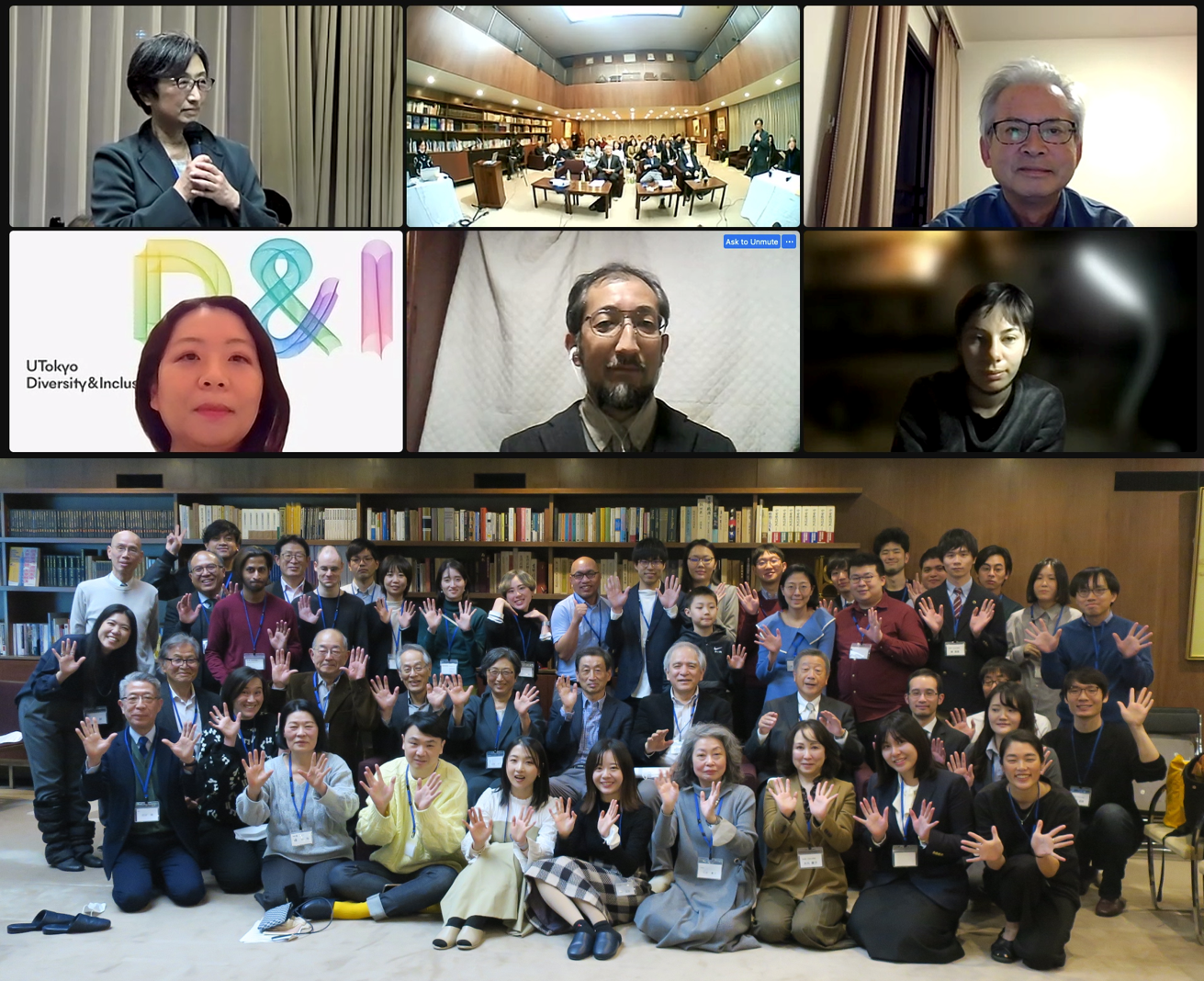The 2023 Scholars Spring Presentation Session
![]()
On March 2, 2024 (Saturday), the spring presentation session for the scholarship recipients of 2023 was held at the foundation hall. The 2023 and 2024 scholars, professors, and foundation staff gathered in the hall, while most of the presenters' dissertation supervisors joined online. Like last year, the presentation session for the 16 scholars has been split into two sessions - one in spring and one in autumn.
Chairperson Atsumi Naoki opened the event with his remarks, and said that he had "expectations for everyone's presentations." Following that, Office Chief Tsunoda Eiichi, the overall host for the event, took over proceedings, and the scholars who would be presenting in autumn took turns hosting and keeping track of time while the remaining eight scholars presented their doctoral research.
The first presenter, Enkh-Amgalan Onon, gave a presentation entitled "Research on the Plural Form in Modern Mongolian," which was about the characteristics of plurals in the modern Mongolian language. In addition to the presentation of her research based on analyzing examples from a corpus and newspapers, her slides also made use of cute animations. I listened to her presentation with great interest. The second presenter, He Xingyu, gave a presentation entitled, "Awareness of Child Abuse and Views About Children Amongst Youth in China - Towards the Creation of a 'Child-Aware Pedagogy.'" With careful consideration of the cultural context, she gave concrete examples of ways to prevent child abuse. I hope this will become a reality in the future. The third presenter, Kim Heecheol, spoke about complex physical manipulation by robots. Through the use of videos showing experiments, he explained his research in an easy to understand manner. As I had heard that robots who could perform complex movements like humans were the most difficult to make, I listened to his presentation with excitement. The last presenter for the first half of this session was Robert Kraft, who discussed the historical significance of "the mission of Japan" according to Uchimura Kanzo, Shiga Shigeta, and Miyake Setsurei from the Meiji period. For a long time there has been a cycle of reflective discussion spurred by the focus on Western theory in philosophy, history, and literature, and this presentation was exciting in how it delved into details of this development in the Meiji period.
After a 15 minute break the second half of the session began. The first to present was the writer of this report, Ma Geyang. I discussed the "Sino-ification" of Chinese Buddhist art in the 5th to 6th centuries (the Nanbokucho period). After the presentation Hirakawa Hiroshi sensei asked, "Should Buddhist statues be seen as works of art, or as religious objects?" This was also related to my doctoral dissertation and a question I've often asked myself, so I was glad that he shared my sentiments. The second presenter, Shirakawa Makoto, gave a presentation on "the function of root extracellular traps in the primary roots of Japanese red pine (pinus densiflora) and interaction with rhizosphere bacteria." I came to know that this bacteria, though one we are familiar with, is in actuality poorly understood. The next presenter, Someya Rinako, spoke about "mothers who continue to provide primary care for children with mental disabilities - focusing on the period following the adoption of the Comprehensive Support Act for Persons with Disabilities." Although the mothers of children with mental disabilities understand that they should separate themselves from their children, they are unable to do so, and the presentation discussed the results of this inability to separate and brought to light the complexity of humans. To end, Xu Zixin spoke on "the role of cellular senescence in anti-cancer induced premature ovarian dysfunction." While presenting the results of her experiments, she discussed future recovery strategies with cy, an anti-cancer medication that leads to infertility. The content was unfamiliar to me, but the use of various methods such as images, videos and graphs made it easy to understand, and I was very impressed by the research.
After each presentation, we received insightful comments from our dissertation supervisors and professors affiliated with the foundation. In addition to reigniting my research motivation, this also provided me with insight into how to be a sincere, collaborative researcher. By speaking with teachers and researchers in other fields, we also receive new perspectives and insights, which in turn help broaden our research horizons.
To close, Managing Director Imanishi Junko gave the closing remarks. She congratulated the scholars who were scheduled to receive their doctorates, and talked about the foundation's 30th anniversary. I have had a very fruitful year as an Atsumi scholar. I would like to take this opportunity to thank everyone at the foundation for their support and kindness. From now on, as a Raccoon, I hope to be able to contribute to the foundation and carry on its mission of international exchange and understanding.
Photos of the Day
Text: Ma Geyang(2023)
Translation: Sonja Dale

![]()
